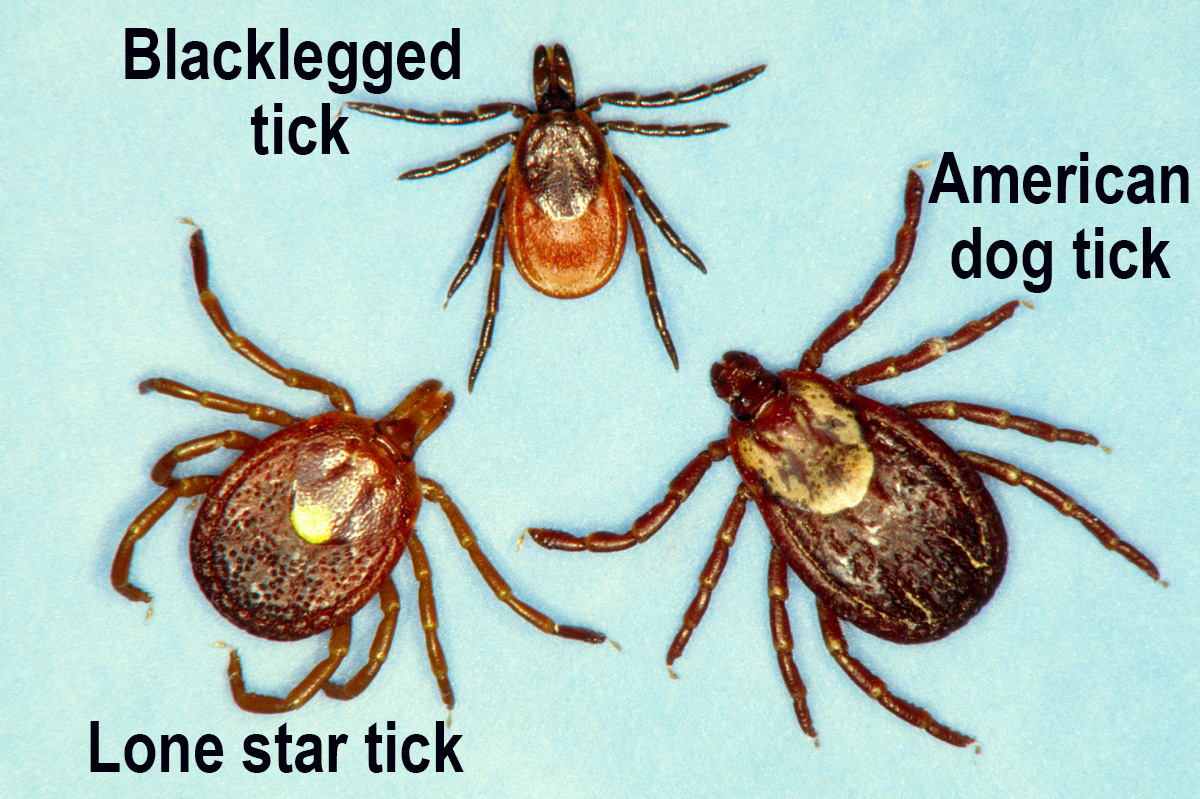
By Kait Chapman, Extension Educator in Lancaster County
During the spring and summer, we receive a lot of inquiries regarding tick prevention and management. While peak season for ticks in Nebraska is throughout May and June, ticks can actually be active year-round in the state. As long as temperatures are above freezing, there is a possibility you may encounter a questing tick, even in the winter. This is why it is important to stay vigilant and protect yourself from ticks and tick-borne illness no matter the season.
PREVENTION
Luckily, there are several things you can do to protect yourself and prevent tick bites while spending time outdoors, including:
• Use a DEET repellent applied to skin.
• Wear long pants tucked into socks.
• Treat or purchase pre-treated clothing with permethrin used to repel ticks.
• Protect your pets with a tick prevention program.
• Perform regular, full-body tick checks on yourself, your children and your pets.
Keep in mind that ticks are associated with their animal hosts, including wildlife, and pesticide sprays applied to a lawn or landscape may only provide limited and temporary protection.
Checking yourself for ticks after spending time outdoors is perhaps one of the most important steps in preventing tick-borne illness. Removing infected ticks as soon as possible reduces the risk of disease transmission. If you do find a tick actively feeding and embedded, remove it as soon as possible with a pair of tweezers. Grasp the tick firmly near the skin and pull it straight out. After removing a tick, disinfect the bite area and keep the tick for identification.
IDENTIFICATION
Why is it important to identify a tick? Different tick species transmit different illnesses and, should symptoms develop, knowing what type of tick may have transmitted the pathogen could help rule out certain diseases. In Nebraska, two of the most encountered tick species are the American dog tick and the lone star tick. While both of these tick species cannot transmit the bacteria responsible for Lyme disease, a third species of tick in Nebraska, the blacklegged tick, can. To date, established populations of the blacklegged tick have only been confirmed in Douglas, Sarpy, Saunders and Thurston Counties.
****************************************
CONTRIBUTE TO DATA ON STATEWIDE TICK DISTRIBUTION
With new tick species being identified in the state, records of tick presence are critical to understanding which species are found where. University of Nebraska–Lincoln’s Tick Tag Go is a community-powered effort to establish baseline data on tick distributions in Nebraska and relies on passive surveillance — the collection of ticks you come across in your daily routine and activities. Submit your tick photos and data for identification at https://ticktaggo.unl.edu.